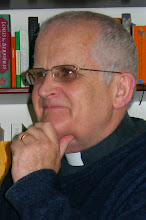Mark 2:23-28 Doing what is not Lawful to do on the Sabbath
The first of two stories set on the Sabbath, the first a “pronouncement story” and the second an (informal) healing story: both are stories that show how Jesus responds to being watched and questioned and spell out the nature and extent of his authority over the Sabbath.
We note the rise in the status of those issuing the challenge as we move through these five challenges: from scribes to Pharisees and Herodians.
While passing through a field, Jesus’ disciples are plucking grain and (presumably) eating it. Is this permitted? Does it violate the Sabbath rest? Does it fall under the provision of Deut. 23:25? There is no problem with taking the grain to snack on; there is no problem with eating on the Sabbath. Are they “harvesting”, and thus working? The exact nature of the alleged infringement is lost on us.
More to the point is Jesus response to the challenge. Jesus alludes to what David did. Reading 1Samuel 21:1-6 shows us what David did not do: have companions, be hungry, enter the house of God, while Abiathar was high priest and eat the bread of the presence. It reads like early Christian “midrash” (commentary) on the David story with an underlying appeal to a “light and the heavy” argument: if David could, how much more could the Son of Man? Later (12:36), Mark will have David call Jesus “Lord”. The same high honor is here won by Jesus’ response to the challenge.
Jesus finishes up with the pithy saying “The Sabbath is made for humankind, not humankind for the Sabbath.” This saying does not jar with current early Jewish thinking and practice. The Sabbath is God’s gift to his people and can accommodate the alleviation of hunger as it can other actions that preserve life.
The “Son of Man” is put before us for the second time, this time as the one who has authority over the Sabbath: later we know we will see him as the one who will go up to Jerusalem with his disciples, there to suffer and die (10:33). In the current context of these two Sabbath stories, Jesus, whom we have seen teaching with power and authority, now as the Son of Man creates case law, authoritatively teaching how the Sabbath is to be lived out within the Kingdom.
Mark 3:1-6 Doing good or evil on the Sabbath
The testers are now keeping a very close eye on Jesus indeed: will their prognosis be for good or evil? By the end of this story we will see the fate of the bridegroom “who will be taken from them” being played out as these testers take counsel as to how Jesus will be destroyed.
Once again, the person being healed, the man with the withered hand, is not personalized by being named. What is important is that he was healed on the Sabbath and that such an action is declared to be permitted. He is brought into clear view (“rise up in the midst”) and healed by a command from Jesus.
Jesus is profoundly angry with the hardness of their hearts and this anger leads on to the healing of the paralytic but the cause of the anger is not clear. Maybe it is because the antithesis (do good or do evil) is such a “no brainer” (FDA approval has been given, get on with it!) and the man with the withered arm is the one who is being left to suffer for no good reason.
His affliction is not life-threatening but since saving life (treatment of life-threatening illness) and taking life (taking up arms in self-defense in 1Macc. 2:41) are currently approved, there is no good reason to delay this more minor case of healing. (Maybe?)
Jesus is the only one who speaks in this story. The paralytic makes no request, the Pharisees are silent. As the one who has authority over the Sabbath (its “lord”), Jesus can exemplify appropriate ways of behaving on the Sabbath. His opponents are silenced but not finished with: they express their anger in their plotting about how the lord of the Sabbath is to be put to death. The plot rises up to the surface again.


0 Comments:
Post a Comment
<< Home